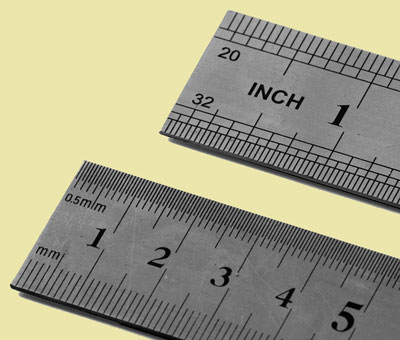

Here’s another head-scratcher. Who was the first nation to sign the Treaty of the Meter in Paris in 1875? Give up? The US of A! We signed, but we didn’t convert. So, after 100 years of foot-dragging, Congress passed the Metric Conversion Act in 1975. And this year we can celebrate 36 years of additional temporizing.
Of course, the global customers of InterTech know we manufacture our leak testing systems to either or both metric and English standards, as required. This results in unnecessary additional costs.
Case in point: Many U.S. vendors do not have complete metric versions of their products, which means that often we will be required to use foreign-made components. Because they are imported, these parts are therefore more expensive and harder to get.
Often, leak test specs will use mixed units, such as X sccm (standard cubic centimeters per minute) at Y psi value. This is inconsistent, leading to errors in globalized operations. To avoid conversion errors, SI units should be used.
As engineers I’m sure we can all agree that switching to metric is the right thing to do-sooner rather than later.
Jacques Hoffmann is president of InterTech Development Co., which designs and builds equipment for leak testing, functional testing and test-centric automated assembly. He can be reached at 847-679-3377.
Editor’s note: “Hoffman on Testing” is part of a series of guest spots by industry experts that will appear regularly on ASSEMBLY’s blog page. Check back frequently to read more commentaries from Jacques, as well as contributions on automated assembly systems, electronics assembly, machine vision, robotics and ergonomics.
